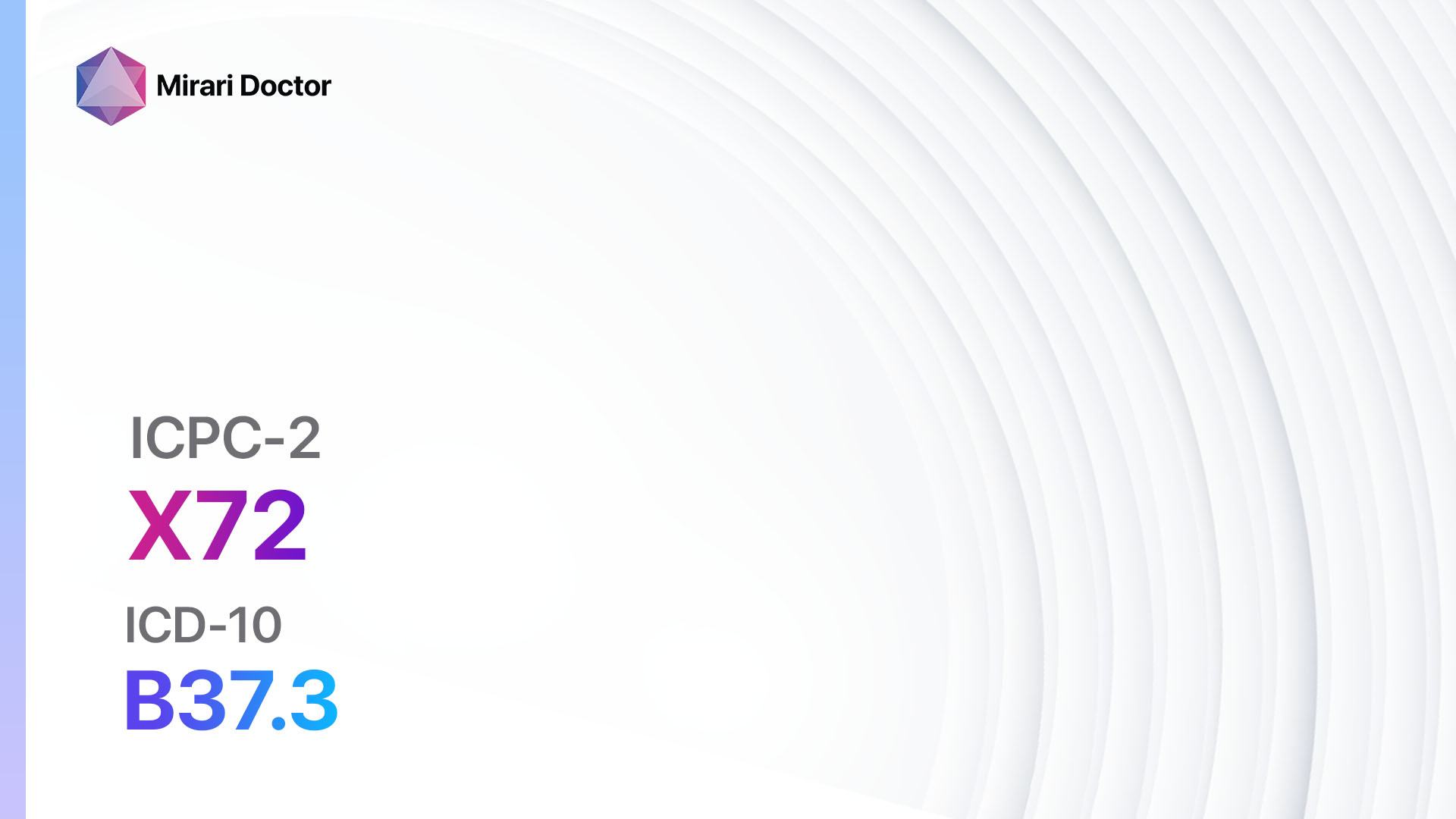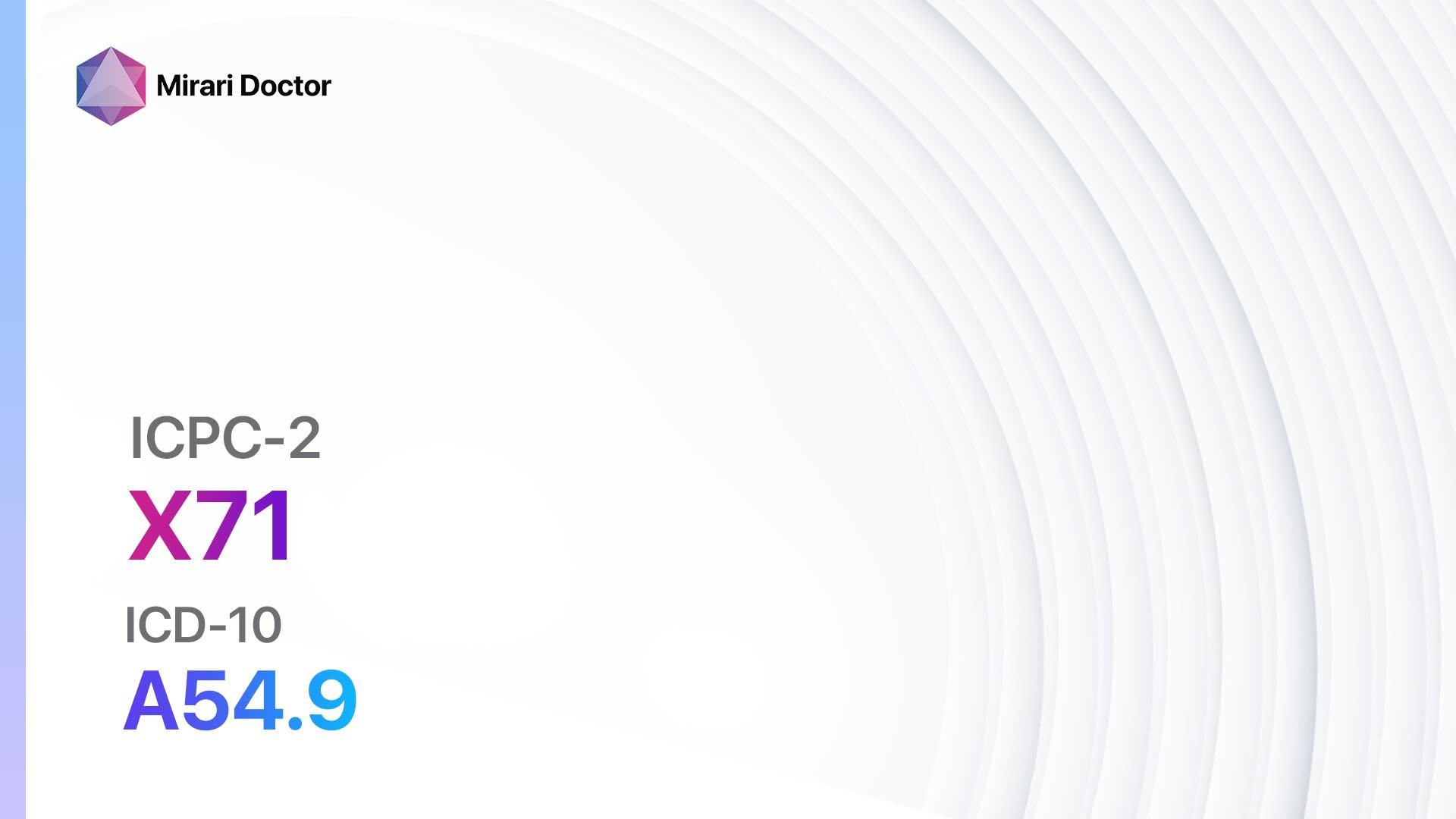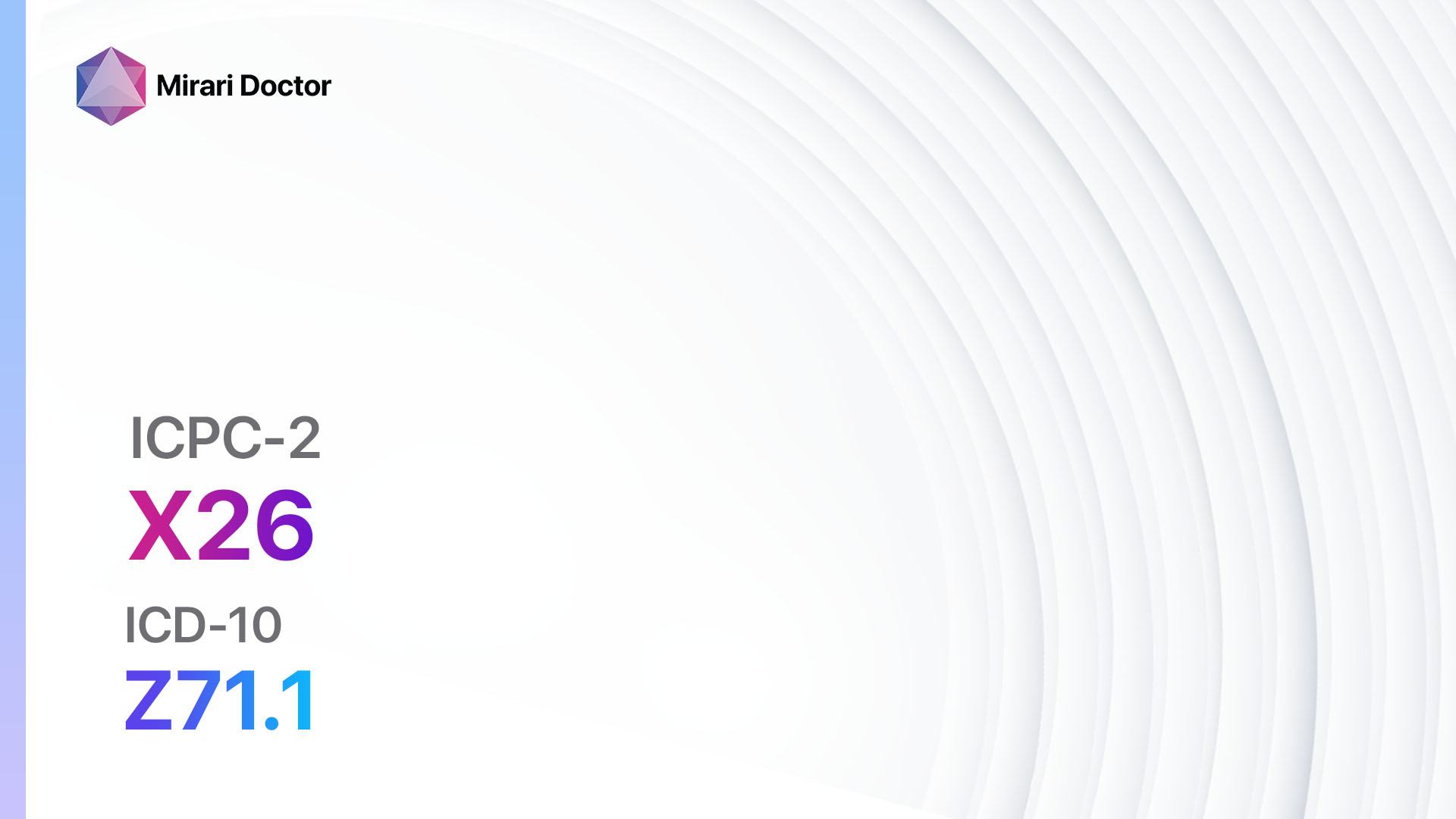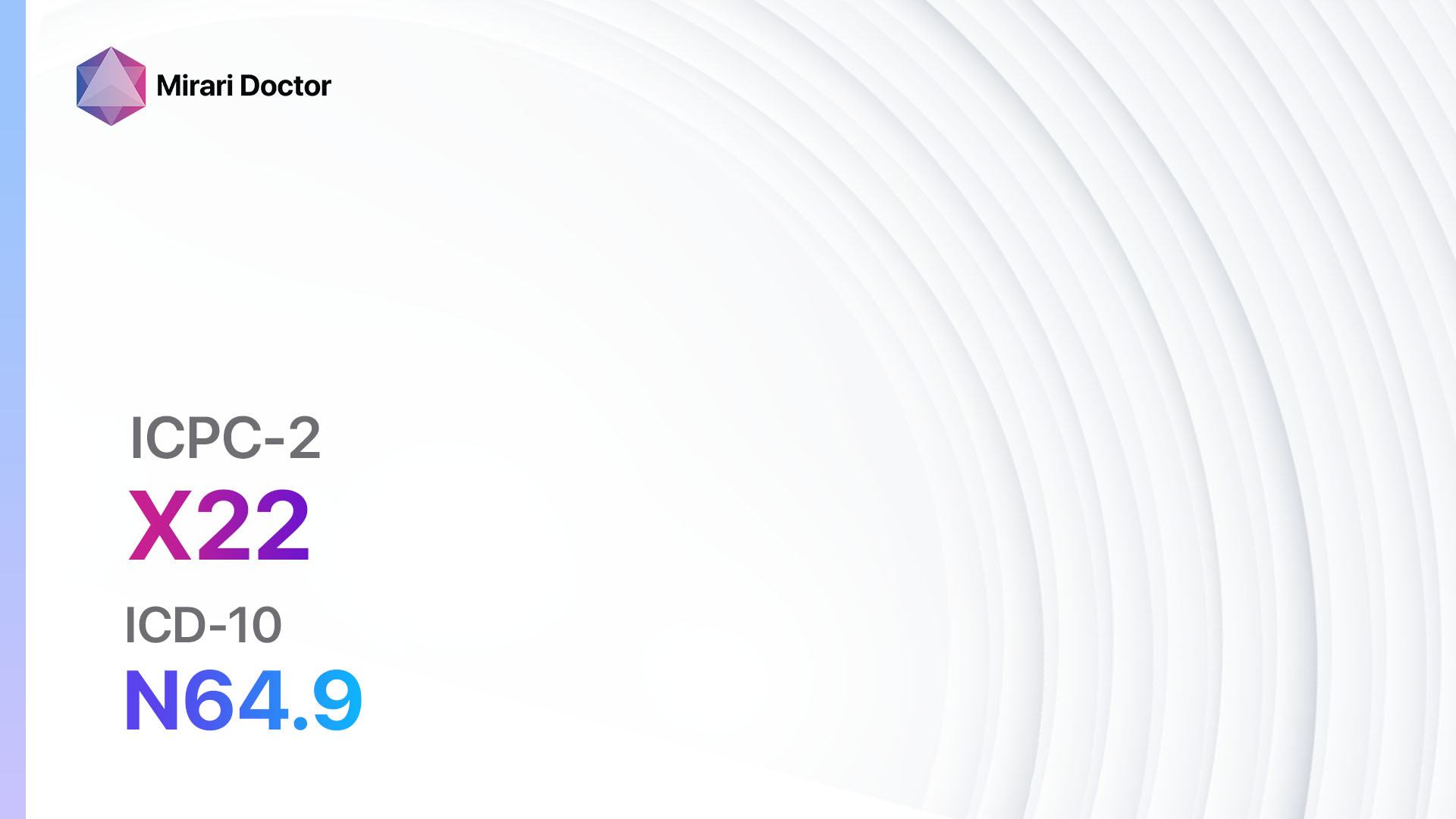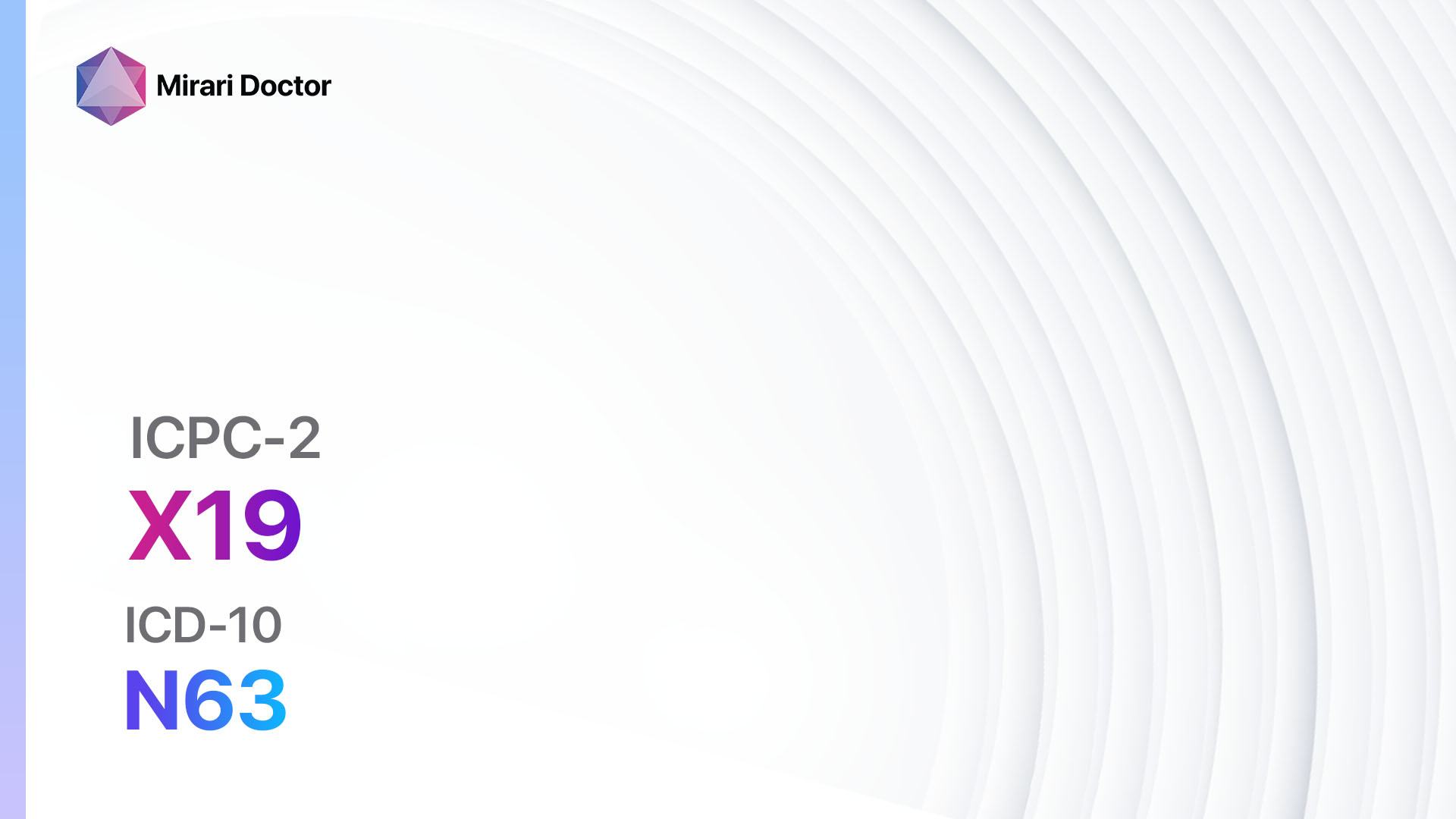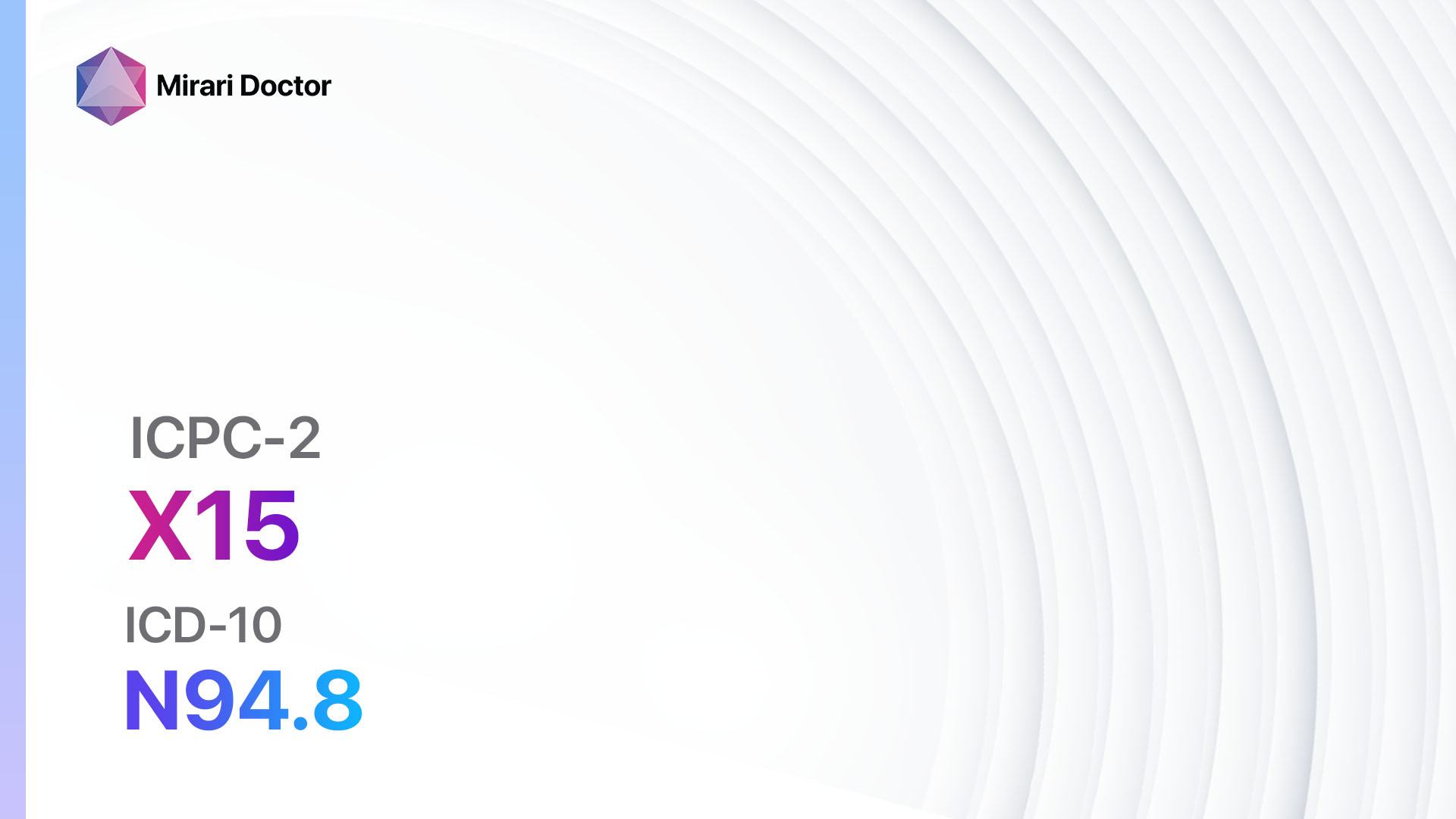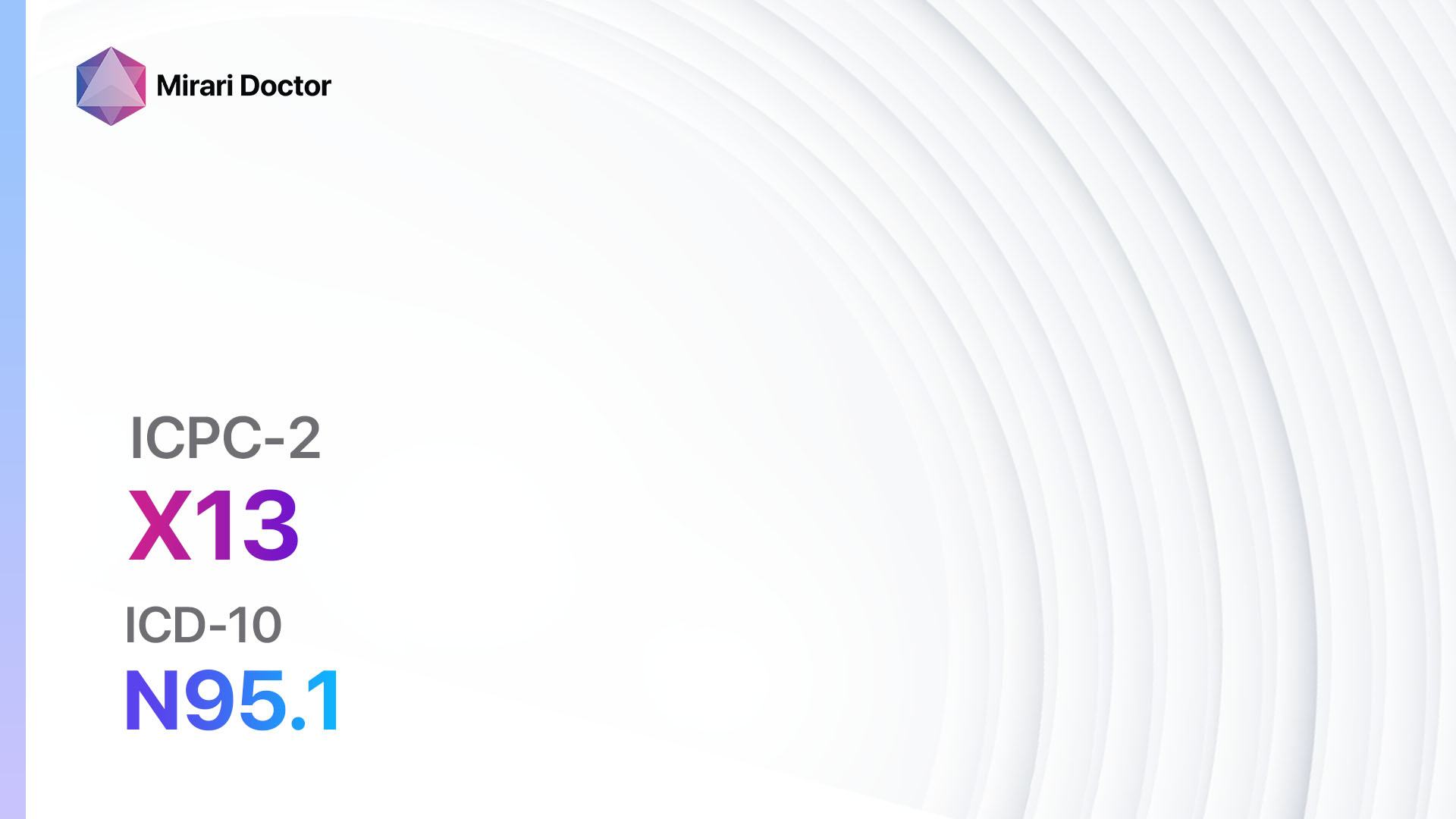
Introduction
Genital pain in females refers to any discomfort or pain experienced in the genital area. It can have various causes and may be associated with different symptoms[1]. This guide aims to provide an overview of the symptoms, causes, diagnostic steps, possible interventions, and lifestyle interventions for genital pain in females.
Codes
Symptoms
- Pain or discomfort in the genital area
- Burning or stinging sensation
- Itching or irritation
- Pain during sexual intercourse
- Pain during urination
- Abnormal vaginal discharge
- Swelling or redness in the genital area[2]
Causes
- Infections, such as yeast infections, urinary tract infections (UTIs), or sexually transmitted infections (STIs)
- Vulvodynia (chronic pain or discomfort in the vulva)
- Pelvic inflammatory disease (PID)
- Endometriosis
- Interstitial cystitis (chronic bladder inflammation)
- Vaginal dryness
- Allergic reactions to certain products, such as soaps, detergents, or latex
- Injury or trauma to the genital area
- Psychological factors, such as anxiety or stress[3][4]
Diagnostic Steps
Medical History
- Gather information about the patient’s symptoms, including the duration, severity, and any triggering factors
- Ask about any previous medical conditions or surgeries related to the genital area
- Inquire about the patient’s sexual history and any recent changes in sexual activity or partners
- Assess for any risk factors for STIs or other infections
- Evaluate the patient’s psychological well-being and any potential stressors[5]
Physical Examination
- Perform a thorough examination of the external genitalia, looking for any signs of redness, swelling, or lesions
- Assess the vaginal walls and cervix for any abnormalities or signs of infection
- Palpate the pelvic area to check for tenderness or masses
- Perform a pelvic floor muscle assessment to evaluate for any muscle dysfunction or tension[6]
Laboratory Tests
- Urine analysis: To check for the presence of bacteria or other signs of infection
- Vaginal swab: To test for yeast or bacterial infections
- STI testing: Depending on the patient’s sexual history and risk factors, testing for STIs such as chlamydia, gonorrhea, or herpes may be necessary
- Blood tests: To evaluate hormone levels or check for any underlying medical conditions[7]
Diagnostic Imaging
- Transvaginal ultrasound: To visualize the pelvic organs and check for any abnormalities or cysts
- Magnetic resonance imaging (MRI): In some cases, an MRI may be ordered to get a more detailed view of the pelvic area[8]
Other Tests
- Vulvar biopsy: In cases where vulvar abnormalities are suspected, a small tissue sample may be taken for further analysis
- Pelvic floor assessment: This may involve specialized tests, such as electromyography (EMG) or biofeedback, to evaluate the function of the pelvic floor muscles[9]
Follow-up and Patient Education
- Schedule a follow-up appointment to discuss the results of the diagnostic tests and determine the appropriate treatment plan
- Provide education to the patient about their condition, including any lifestyle modifications or self-care measures that may help alleviate symptoms
- Address any concerns or questions the patient may have and ensure they have a clear understanding of their diagnosis and treatment options[10]
Possible Interventions
Traditional Interventions
Medications:
Top 5 drugs for Genital Pain in Females:
- Antifungal medications (e.g., Fluconazole, Clotrimazole):
- Cost: Generic versions can range from $5 to $20.
- Contraindications: Hypersensitivity to the medication.
- Side effects: Nausea, headache, rash.
- Severe side effects: Severe allergic reactions.
- Drug interactions: Warfarin, certain anticonvulsants.
- Warning: Inform healthcare provider of any liver or kidney problems.
- Antibiotics (e.g., Metronidazole, Ceftriaxone):
- Cost: Generic versions can range from $10 to $50.
- Contraindications: Hypersensitivity to the medication.
- Side effects: Nausea, diarrhea, metallic taste.
- Severe side effects: Severe allergic reactions, blood disorders.
- Drug interactions: Warfarin, certain anticoagulants.
- Warning: Avoid alcohol while taking metronidazole.
- Topical corticosteroids (e.g., Hydrocortisone cream):
- Cost: Generic versions can range from $5 to $20.
- Contraindications: Hypersensitivity to the medication.
- Side effects: Skin thinning, burning or stinging sensation.
- Severe side effects: Allergic reactions, skin infections.
- Drug interactions: None reported.
- Warning: Avoid using on open wounds or broken skin.
- Topical anesthetics (e.g., Lidocaine gel):
- Cost: Generic versions can range from $10 to $30.
- Contraindications: Hypersensitivity to the medication.
- Side effects: Localized numbness, skin irritation.
- Severe side effects: Allergic reactions, skin infections.
- Drug interactions: None reported.
- Warning: Avoid using on open wounds or broken skin.
- Hormonal therapy (e.g., Estrogen cream):
- Cost: Generic versions can range from $20 to $50.
- Contraindications: History of breast cancer, blood clots.
- Side effects: Breast tenderness, vaginal discharge.
- Severe side effects: Increased risk of breast cancer, blood clots.
- Drug interactions: None reported.
- Warning: Discuss risks and benefits with healthcare provider.
Alternative Drugs:
- Antihistamines (e.g., Loratadine): May help alleviate itching and irritation.
- Tricyclic antidepressants (e.g., Amitriptyline): Can be used for neuropathic pain associated with vulvodynia.
- Gabapentin: Another option for neuropathic pain management.
- Muscle relaxants (e.g., Baclofen): May be prescribed for pelvic floor muscle dysfunction.
- Selective serotonin reuptake inhibitors (e.g., Fluoxetine): Can be used for pain management in some cases.
Surgical Procedures:
- Laser therapy: In cases of vulvar pain or vulvodynia, laser therapy may be considered to reduce pain and improve tissue health. Cost: $500 to $1,500 per session.
- Surgical excision: In certain cases, surgical excision of abnormal tissue or lesions may be necessary. Cost: Varies depending on the complexity of the procedure.
Alternative Interventions
- Pelvic floor physical therapy: This therapy involves exercises and techniques to improve pelvic floor muscle function and reduce pain. Cost: $100 to $200 per session.
- Acupuncture: May help alleviate pain and improve blood flow. Cost: $60 to $120 per session.
- Mind-body techniques: Techniques such as meditation, relaxation exercises, or cognitive-behavioral therapy may help manage pain and reduce stress. Cost: Varies depending on the specific therapy and provider.
- Herbal supplements: Some herbal supplements, such as evening primrose oil or chamomile, may have potential benefits for reducing inflammation and relieving pain. Cost: Varies depending on the specific supplement.
- Topical numbing creams: Over-the-counter or prescription numbing creams may provide temporary relief from pain and discomfort. Cost: Varies depending on the specific product and prescription coverage.
Lifestyle Interventions
- Avoiding irritants: Encourage the patient to avoid using harsh soaps, detergents, or other products that may irritate the genital area.
- Wearing loose-fitting clothing: Suggest wearing breathable cotton underwear and avoiding tight-fitting pants or synthetic fabrics.
- Maintaining good hygiene: Emphasize the importance of regular gentle cleansing of the genital area and avoiding excessive washing or douching.
- Using lubrication: For women experiencing pain during sexual intercourse, using water-based lubricants may help reduce friction and discomfort.
- Stress management: Encourage the patient to engage in stress-reducing activities, such as exercise, meditation, or hobbies, to help manage pain and improve overall well-being.
It is important to note that the cost ranges provided are approximate and may vary depending on the location and availability of the interventions.
Mirari Cold Plasma Alternative Intervention
Understanding Mirari Cold Plasma
- Safe and Non-Invasive Treatment: Mirari Cold Plasma is a safe and non-invasive treatment option for various skin conditions. It does not require incisions, minimizing the risk of scarring, bleeding, or tissue damage.
- Efficient Extraction of Foreign Bodies: Mirari Cold Plasma facilitates the removal of foreign bodies from the skin by degrading and dissociating organic matter, allowing easier access and extraction.
- Pain Reduction and Comfort: Mirari Cold Plasma has a local analgesic effect, providing pain relief during the treatment, making it more comfortable for the patient.
- Reduced Risk of Infection: Mirari Cold Plasma has antimicrobial properties, effectively killing bacteria and reducing the risk of infection.
- Accelerated Healing and Minimal Scarring: Mirari Cold Plasma stimulates wound healing and tissue regeneration, reducing healing time and minimizing the formation of scars.
Mirari Cold Plasma Prescription
Video instructions for using Mirari Cold Plasma Device – X01 Genital pain female (ICD-10:R10.2)
| Mild | Moderate | Severe |
| Mode setting: 1 (Infection) Location: 0 (Localized) Morning: 15 minutes, Evening: 15 minutes |
Mode setting: 1 (Infection) Location: 0 (Localized) Morning: 30 minutes, Lunch: 30 minutes, Evening: 30 minutes |
Mode setting: 1 (Infection) Location: 0 (Localized) Morning: 30 minutes, Lunch: 30 minutes, Evening: 30 minutes |
| Mode setting: 2 (Wound Healing) Location: 0 (Localized) Morning: 15 minutes, Evening: 15 minutes |
Mode setting: 2 (Wound Healing) Location: 0 (Localized) Morning: 30 minutes, Lunch: 30 minutes, Evening: 30 minutes |
Mode setting: 2 (Wound Healing) Location: 0 (Localized) Morning: 30 minutes, Lunch: 30 minutes, Evening: 30 minutes |
| Mode setting: 7 (Immunotherapy) Location: 1 (Sacrum) Morning: 15 minutes, Evening: 15 minutes |
Mode setting: 7 (Immunotherapy) Location: 1 (Sacrum) Morning: 30 minutes, Lunch: 30 minutes, Evening: 30 minutes |
Mode setting: 7 (Immunotherapy) Location: 1 (Sacrum) Morning: 30 minutes, Lunch: 30 minutes, Evening: 30 minutes |
| Mode setting: 5 (Prostatitis) Location: 2 (Prostate & Uterus) Morning: 15 minutes, Evening: 15 minutes |
Mode setting: 5 (Prostatitis) Location: 2 (Prostate & Uterus) Morning: 30 minutes, Lunch: 30 minutes, Evening: 30 minutes |
Mode setting: 5 (Prostatitis) Location: 2 (Prostate & Uterus) Morning: 30 minutes, Lunch: 30 minutes, Evening: 30 minutes |
| Total Morning: 60 minutes approx. $10 USD, Evening: 60 minutes approx. $10 USD |
Total Morning: 120 minutes approx. $20 USD, Lunch: 120 minutes approx. $20 USD, Evening: 120 minutes approx. $20 USD, |
Total Morning: 120 minutes approx. $20 USD, Lunch: 120 minutes approx. $20 USD, Evening: 120 minutes approx. $20 USD, |
| Usual treatment for 7-60 days approx. $140 USD – $1200 USD | Usual treatment for 6-8 weeks approx. $2,520 USD – $3,360 USD |
Usual treatment for 3-6 months approx. $5,400 USD – $10,800 USD
|
 |
|
Use the Mirari Cold Plasma device to treat Genital pain female effectively.
WARNING: MIRARI COLD PLASMA IS DESIGNED FOR THE HUMAN BODY WITHOUT ANY ARTIFICIAL OR THIRD PARTY PRODUCTS. USE OF OTHER PRODUCTS IN COMBINATION WITH MIRARI COLD PLASMA MAY CAUSE UNPREDICTABLE EFFECTS, HARM OR INJURY. PLEASE CONSULT A MEDICAL PROFESSIONAL BEFORE COMBINING ANY OTHER PRODUCTS WITH USE OF MIRARI.
Step 1: Cleanse the Skin
- Start by cleaning the affected area of the skin with a gentle cleanser or mild soap and water. Gently pat the area dry with a clean towel.
Step 2: Prepare the Mirari Cold Plasma device
- Ensure that the Mirari Cold Plasma device is fully charged or has fresh batteries as per the manufacturer’s instructions. Make sure the device is clean and in good working condition.
- Switch on the Mirari device using the power button or by following the specific instructions provided with the device.
- Some Mirari devices may have adjustable settings for intensity or treatment duration. Follow the manufacturer’s instructions to select the appropriate settings based on your needs and the recommended guidelines.
Step 3: Apply the Device
- Place the Mirari device in direct contact with the affected area of the skin. Gently glide or hold the device over the skin surface, ensuring even coverage of the area experiencing.
- Slowly move the Mirari device in a circular motion or follow a specific pattern as indicated in the user manual. This helps ensure thorough treatment coverage.
Step 4: Monitor and Assess:
- Keep track of your progress and evaluate the effectiveness of the Mirari device in managing your Genital pain female. If you have any concerns or notice any adverse reactions, consult with your health care professional.
Note
This guide is for informational purposes only and should not replace the advice of a medical professional. Always consult with your healthcare provider or a qualified medical professional for personal advice, diagnosis, or treatment. Do not solely rely on the information presented here for decisions about your health. Use of this information is at your own risk. The authors of this guide, nor any associated entities or platforms, are not responsible for any potential adverse effects or outcomes based on the content.
Mirari Cold Plasma System Disclaimer
- Purpose: The Mirari Cold Plasma System is a Class 2 medical device designed for use by trained healthcare professionals. It is registered for use in Thailand and Vietnam. It is not intended for use outside of these locations.
- Informational Use: The content and information provided with the device are for educational and informational purposes only. They are not a substitute for professional medical advice or care.
- Variable Outcomes: While the device is approved for specific uses, individual outcomes can differ. We do not assert or guarantee specific medical outcomes.
- Consultation: Prior to utilizing the device or making decisions based on its content, it is essential to consult with a Certified Mirari Tele-Therapist and your medical healthcare provider regarding specific protocols.
- Liability: By using this device, users are acknowledging and accepting all potential risks. Neither the manufacturer nor the distributor will be held accountable for any adverse reactions, injuries, or damages stemming from its use.
- Geographical Availability: This device has received approval for designated purposes by the Thai and Vietnam FDA. As of now, outside of Thailand and Vietnam, the Mirari Cold Plasma System is not available for purchase or use.
References
- Sabate JM, Clotet M, Torrubia S, et al. Radiologic evaluation of breast disorders related to pregnancy and lactation. Radiographics. 2007;27(Suppl 1):S101-124.
- American College of Obstetricians and Gynecologists. (2020). Vulvovaginal Health. Retrieved from https://www.acog.org/womens-health/faqs/vulvovaginal-health
- National Vulvodynia Association. (2021). What is Vulvodynia? Retrieved from https://www.nva.org/what-is-vulvodynia/
- Centers for Disease Control and Prevention. (2021). Pelvic Inflammatory Disease (PID) – CDC Fact Sheet. Retrieved from https://www.cdc.gov/std/pid/stdfact-pid.htm
- Moldenhauer, J. S. (2024). Introduction to Complications of Labor and Delivery. MSD Manual Consumer Version.
- American College of Obstetricians and Gynecologists. (2020). ACOG Practice Bulletin No. 213: Female Sexual Dysfunction. Obstetrics & Gynecology, 135(1), e1-e18.
- Centers for Disease Control and Prevention. (2021). Sexually Transmitted Diseases (STDs): Laboratory Testing. Retrieved from https://www.cdc.gov/std/treatment-guidelines/laboratory-testing.htm
- American College of Radiology. (2019). ACR Appropriateness Criteria® Pelvic Floor Dysfunction. Retrieved from https://acsearch.acr.org/docs/69508/Narrative/
- Bo, K., Frawley, H. C., Haylen, B. T., et al. (2017). An International Urogynecological Association (IUGA)/International Continence Society (ICS) joint report on the terminology for the conservative and nonpharmacological management of female pelvic floor dysfunction. International Urogynecology Journal, 28(2), 191-213.
- American College of Obstetricians and Gynecologists. (2020). ACOG Committee Opinion No. 799: Female Sexual Dysfunction. Obstetrics & Gynecology, 135(4), e287-e290.
Related articles
Made in USA



